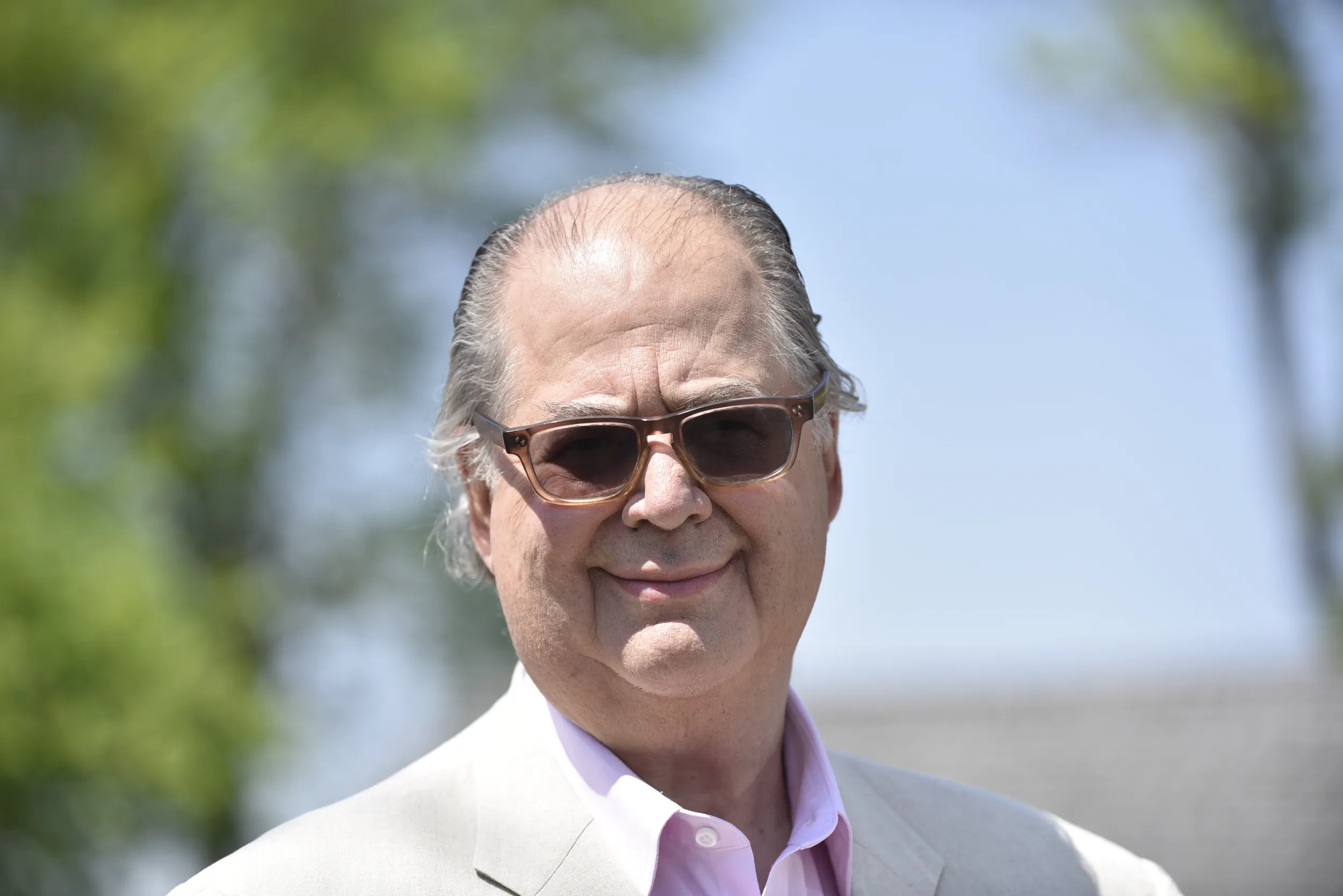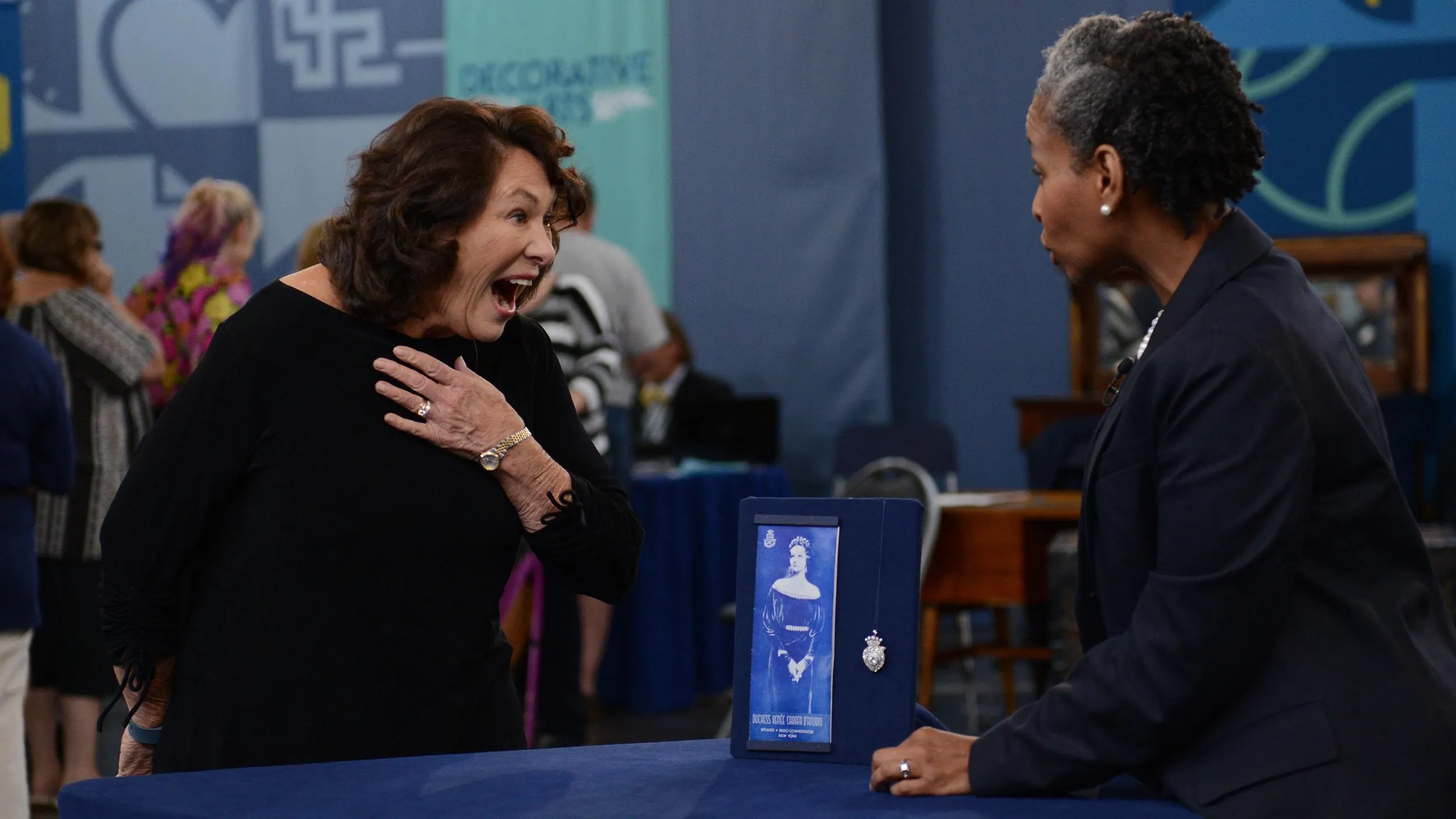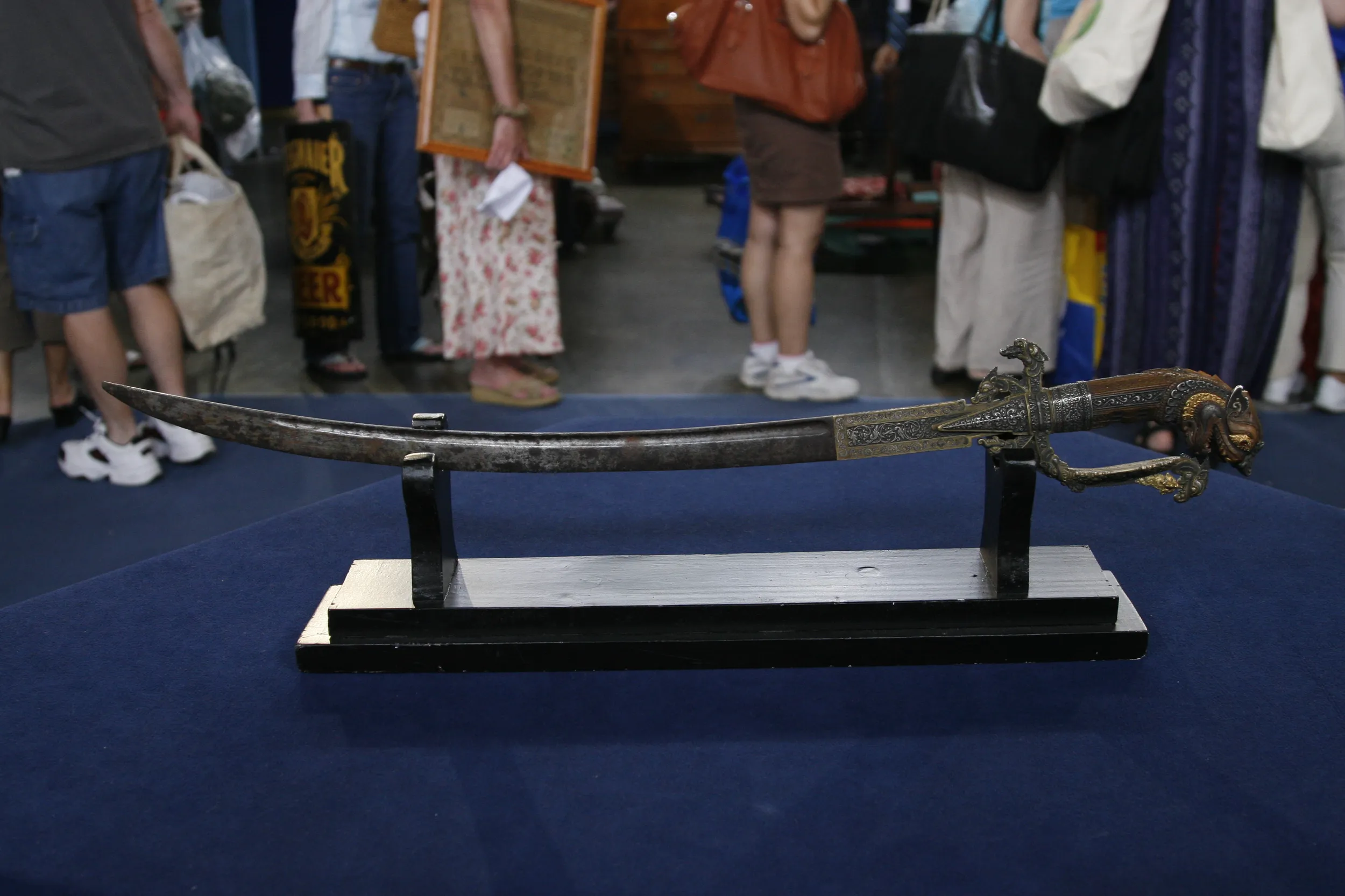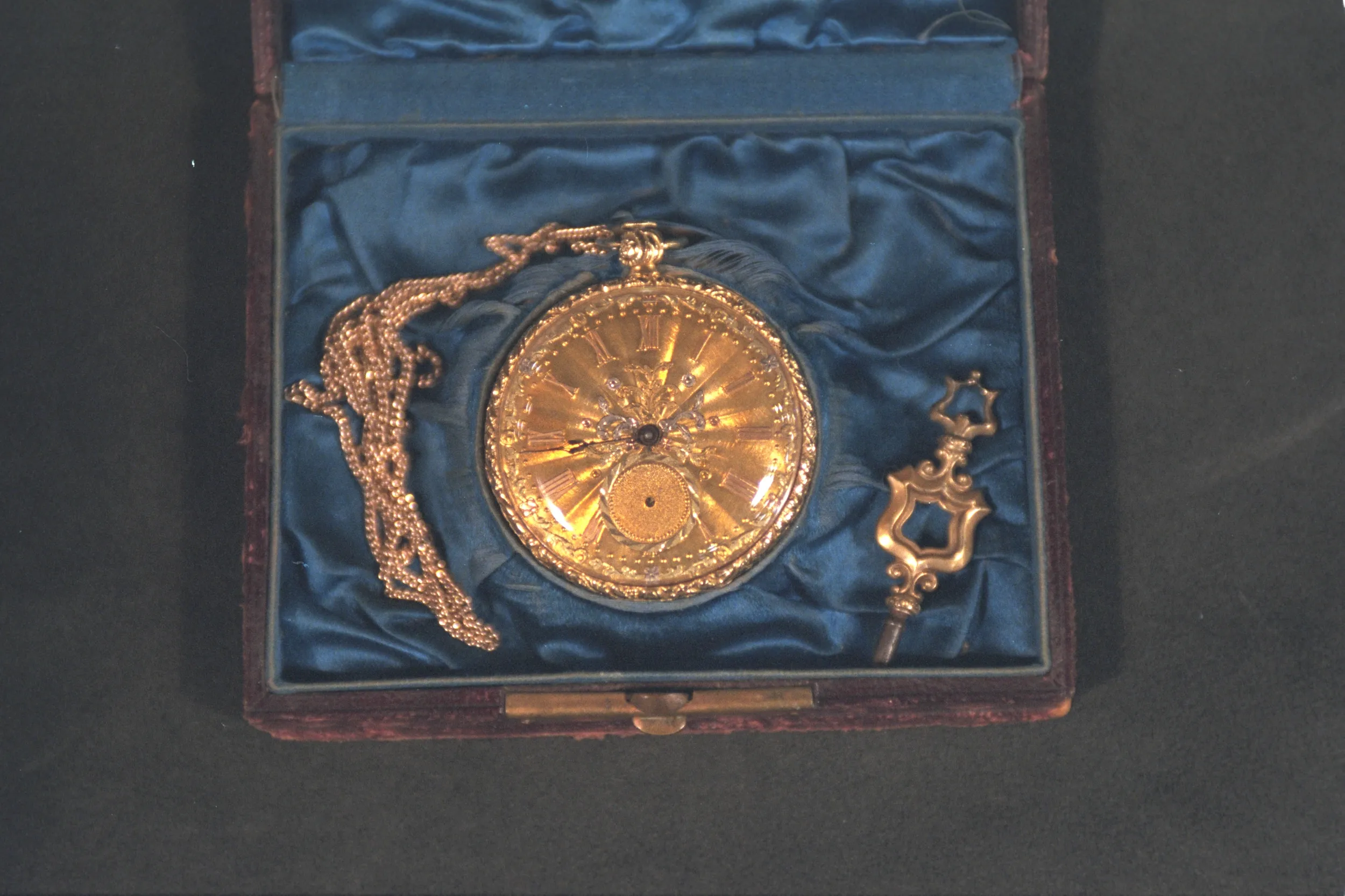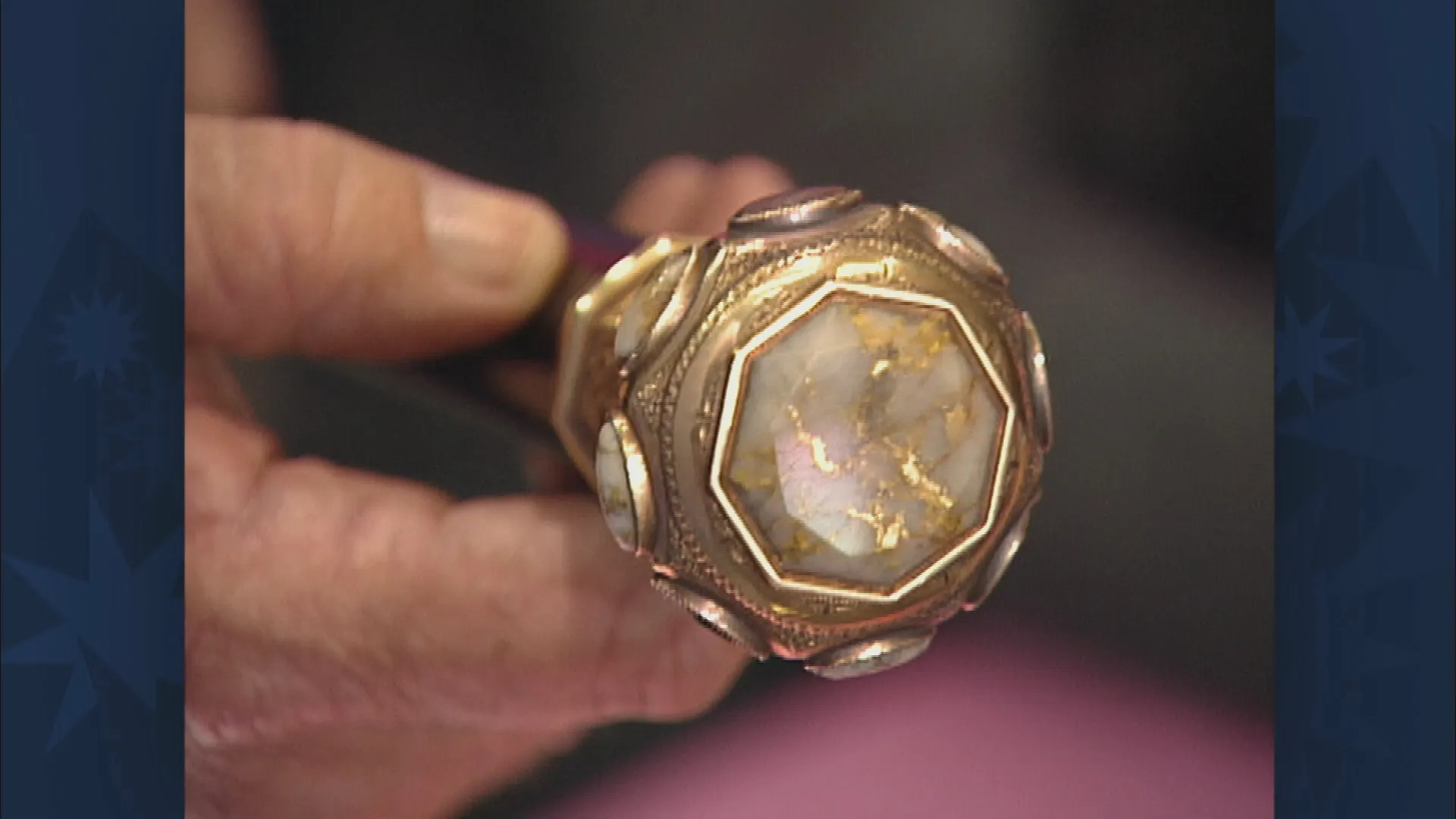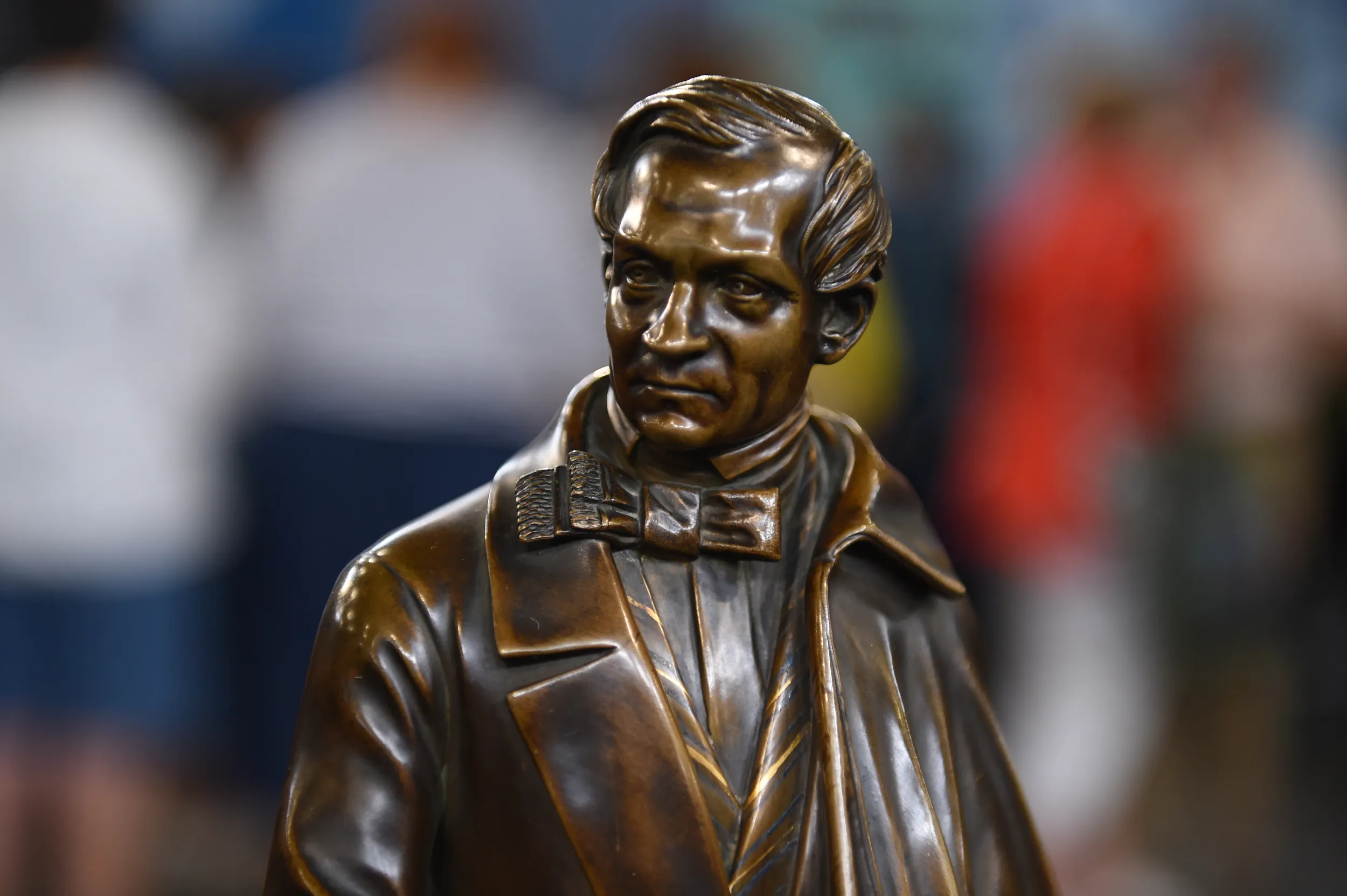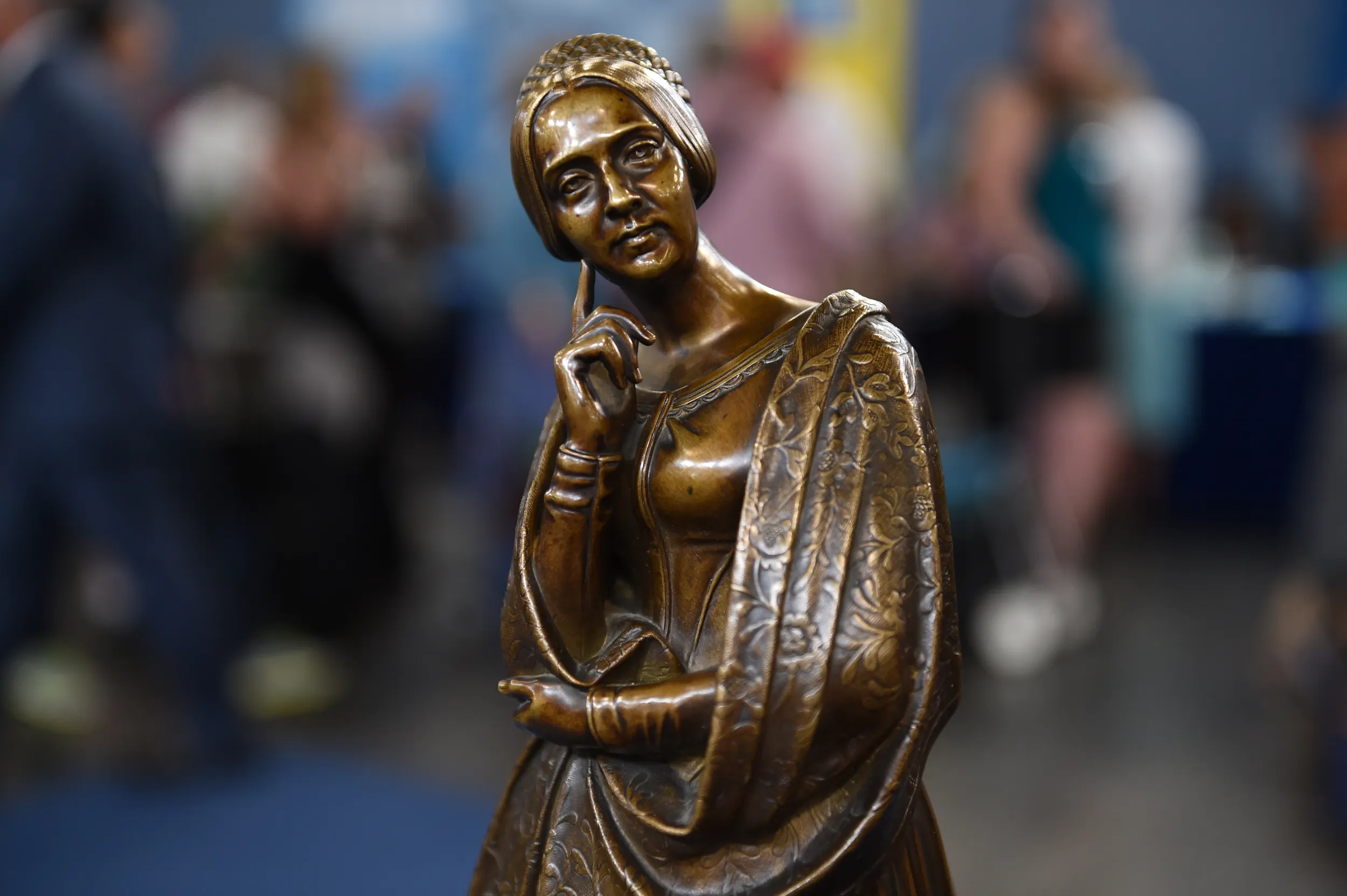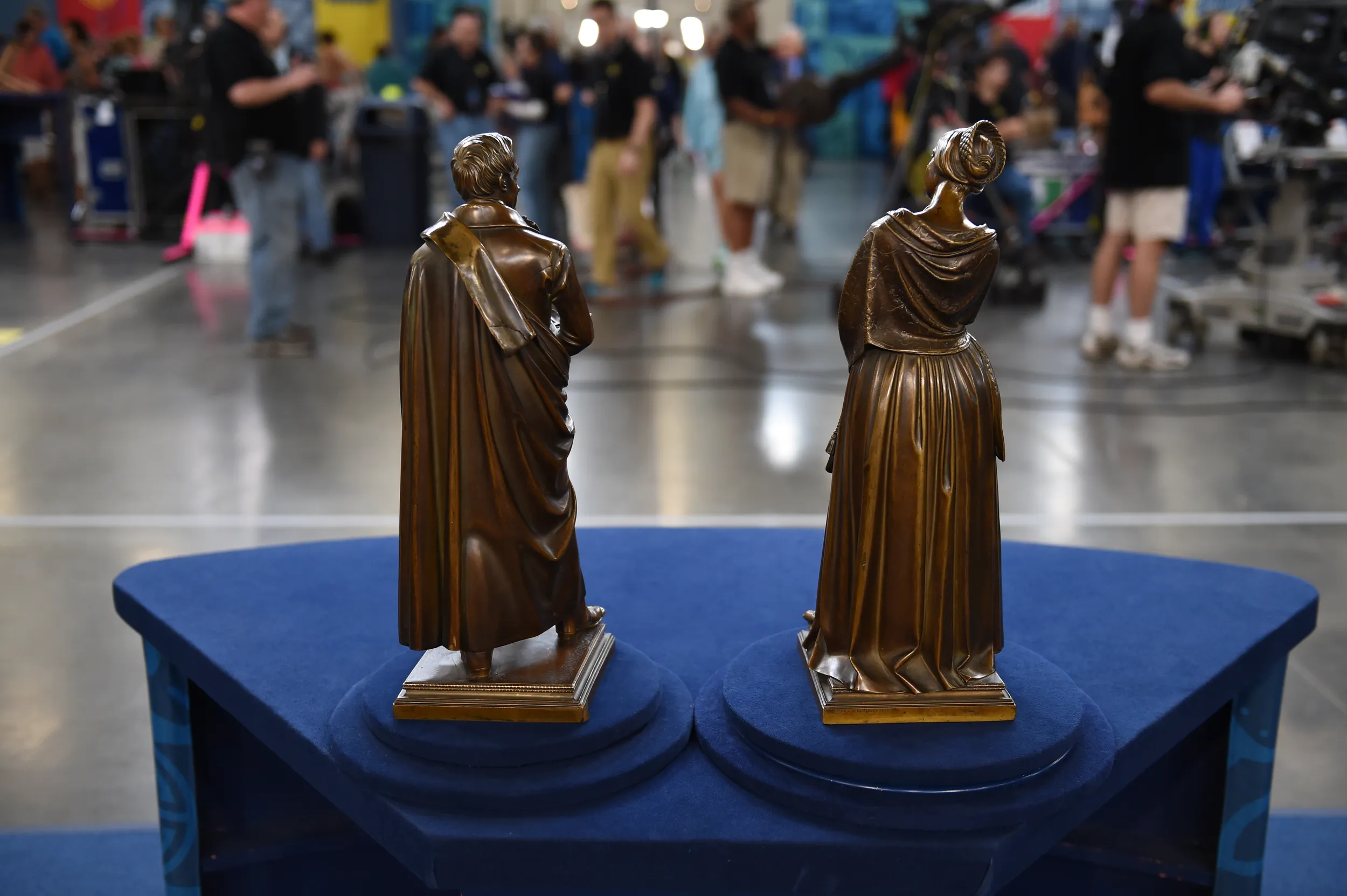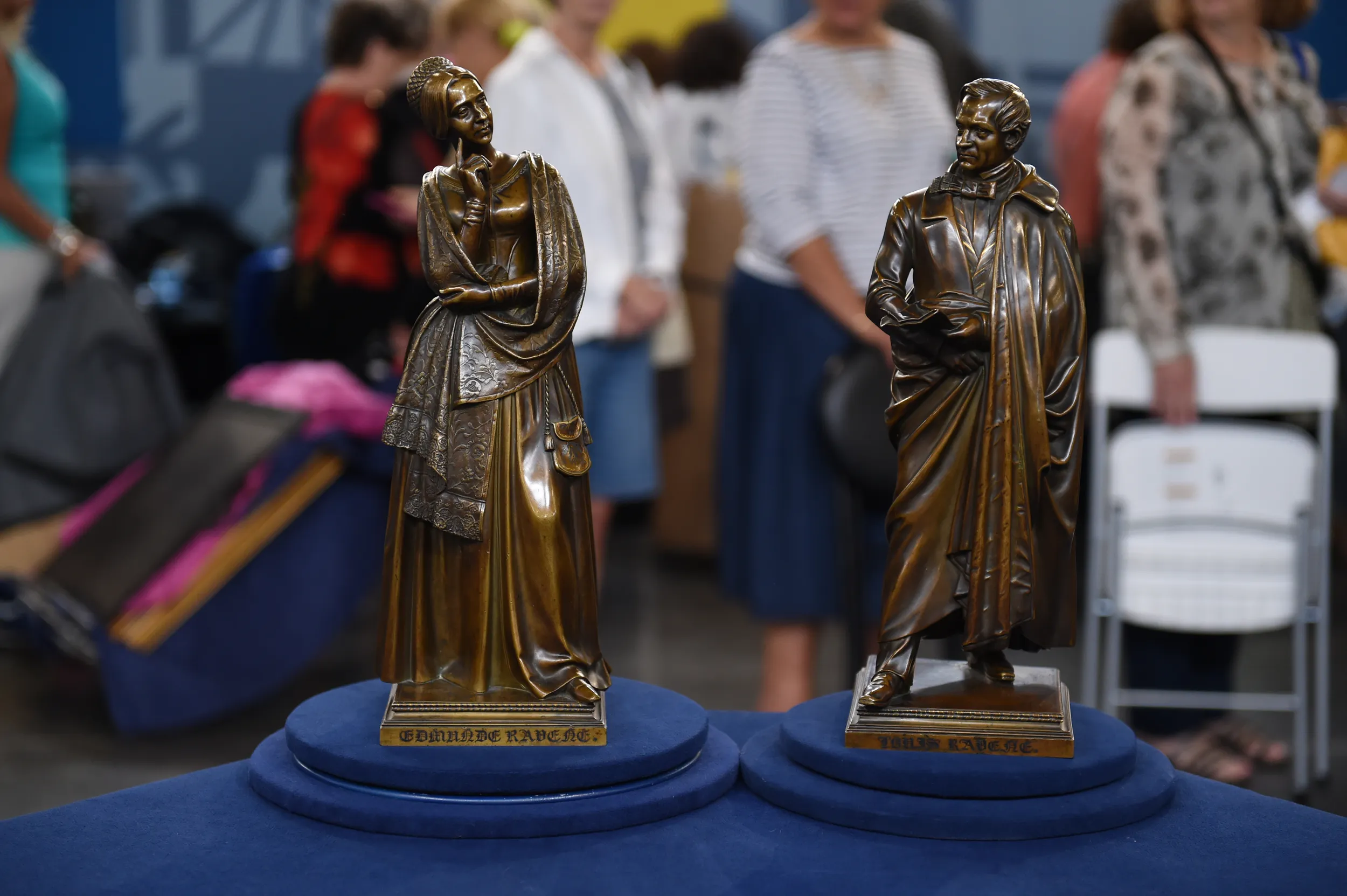GUEST: This is Peter Louis Ravené, and this is Edmunde Ravené. And they are my great-great-grandparents. They are French Huguenots. Fled to Germany, ended up in Berlin. He was a huge steel and iron foundry entrepreneur, and was a big fan of the arts, and had a gallery in Berlin, and commissioned Gustav Blaeser to do his statuettes of him and his wife.
APPRAISER: They're wonderful sculptures, and it is really remarkable on the ROADSHOW to have somebody come in with a sculpture of one of their relatives. But what's even more extraordinary is that these did not come down to you through your family-- they came an unusual way. How is that?
GUEST: My uncle and aunt in New York, they're both artists, and my uncle loved to go into the city and look in the art galleries. And he was strolling the art galleries one day and saw in the window the statues and thought they were lovely, and saw the Ravené name, and had to run home and tell my aunt. He said, "You have to come in to see these-- they're your ancestors." So she came in and fell in love with them, and of course had to have them.
APPRAISER: What's extraordinary also is the names are not just incised or engraved on it, but they're actually set in silver.
GUEST: Yes.
APPRAISER: So the silver is inlaid to the bronze.
GUEST: Okay.
APPRAISER: And on her purse here, that's also inlaid with copper and gold. Wonderful portraits. Their costumes are great. And I think it shows the skill of the artist that they really have a wonderful expression-- the way she's in this pensive position, and he's, again, very stalwart and everything, and he has that great bow tie. I mean, it's really, really a wonderful group. Both of them are signed.
GUEST: Yes.
APPRAISER: And dated. Blaeser, and it's dated 1847. Over here we have the foundry, and it's Konarzewski. Most of the sculpture we see at the ROADSHOW is French or American, so it's unusual to see German sculpture, and it's particularly… this is very early for sculpture in 1847. So how much did your uncle pay for these?
GUEST: He paid $10,000 for the pair in 1986.
APPRAISER: That was a hunk of money.
GUEST: Yeah, it was.
APPRAISER: But that was retail Madison Avenue in those days.
GUEST: Right.
APPRAISER: And all things considered, it's a lot of money, but when you think about this artist who did many, many monumental commissions in Germany, you think of the quality of the bronze, the way it's cast, the way it's finished, fantastic patina, the fact that it has this inlay of silver, it's really a reasonable price for objects of this quality. Works by German sculptors of the mid-19th century are not particularly popular. There's no surging demand for sculpture. I would put an insurance value on these for around $25,000.
GUEST: Okay. For the pair?
APPRAISER: For the pair.
GUEST: Right.
APPRAISER: Yeah. Anybody in your family look like these two guys?
GUEST: You know, my father kind of has his nose.
